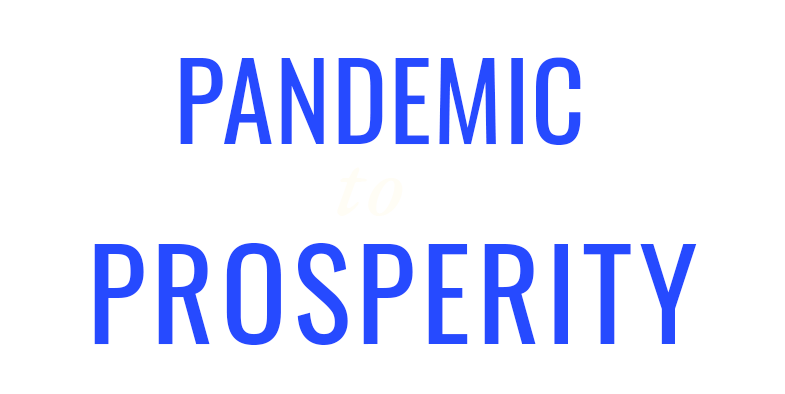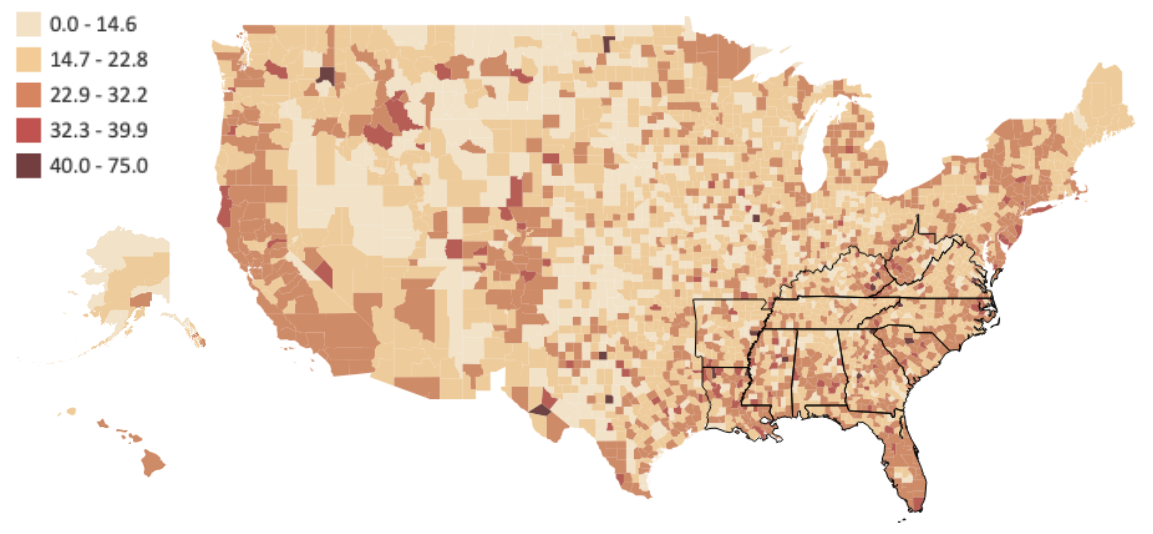Severe housing costs
1 in 4 renters pay half of household income on housing costs.
Severe housing cost burdens by county, 2016-20
Percent of renter households paying half or more of household income on housing costs
The nation was facing a severe housing shortage when the pandemic struck in 2020. Following the Great Recession, new home construction dramatically declined — driving up home prices over the decade without commensurate increases in income.1,2 Paying half one’s household income on rent puts many families in a precarious situation.3 Not surprisingly, this level of housing insecurity can cause frequent moves which lead to frequent school changes, absenteeism, and lower test scores for children.4 Children without stable housing are also susceptible to mental health issues, developmental delays, and trauma.5 Before Covid, Florida and Louisiana had the highest rates of severe housing cost burden, at 29% and 28% of renters, respectively. In some Southern counties, more than 40% of all renters reported they were severely cost-burdened.
Then the pandemic struck and lower interest rates pushed housing prices even higher.6 A Southern Economic Advancement Project (SEAP) survey of 3,500 Supplemental Nutrition Assistance Program (SNAP) recipients in Alabama, Georgia, Mississippi, and New Orleans, Louisiana in November 2021 revealed that 34% had difficulty accessing or maintaining housing during Covid. More than half said affordable housing was their community’s greatest challenge.7 As recently as March 2022, ⅓ of Southerners who are late on housing payments fear they may soon be evicted or foreclosed upon (Likelihood of Eviction or Foreclosure).
“A Decade of Home Building: The Long Recovery of the 2010s”. Dietz. National Association of Home Builders. January, 2020. https://eyeonhousing.org/2020/01/a-decade-of-home-building-the-long-recovery-of-the-2010s/
“Gap between income growth and housing cost increases continues to grow”. Binkovitz. Rice University. July, 2019. https://kinder.rice.edu/urbanedge/2019/07/25/gap-between-income-growth-and-housing-cost-increases-continues-grow
“Homelessness Rises Faster Where Rent Exceeds a Third of Income”. Glynn. Zillow. December, 2018. https://www.zillow.com/research/homelessness-rent-affordability-22247/
“Reduce poverty by improving housing stability”. Cunningham. Urban Institute. June, 2016. https://www.urban.org/urban-wire/reduce-poverty-improving-housing-stability
“The Importance of Housing Affordability and Stability for Preventing and Ending Homelessness”. U.S. Interagency Council on Homelessness. May, 2019. https://www.usich.gov/resources/uploads/asset_library/Housing-Affordability-and-Stablility-Brief.pdf
“Where is the U.S. Housing Shortage?” Nechayev. The Counselors of Real Estate. November, 2021. https://cre.org/real-estate-issues/where-is-the-u-s-housing-shortage/
“Two years into the pandemic, Southern families’ struggle with housing weighs heavy as lawmakers begin ARP spending plans”. The Southern Economic Advancement Project. March, 2022. https://theseap.org/wp-content/uploads/2022/03/ARP-Survey-Release_March_2022.pdf

